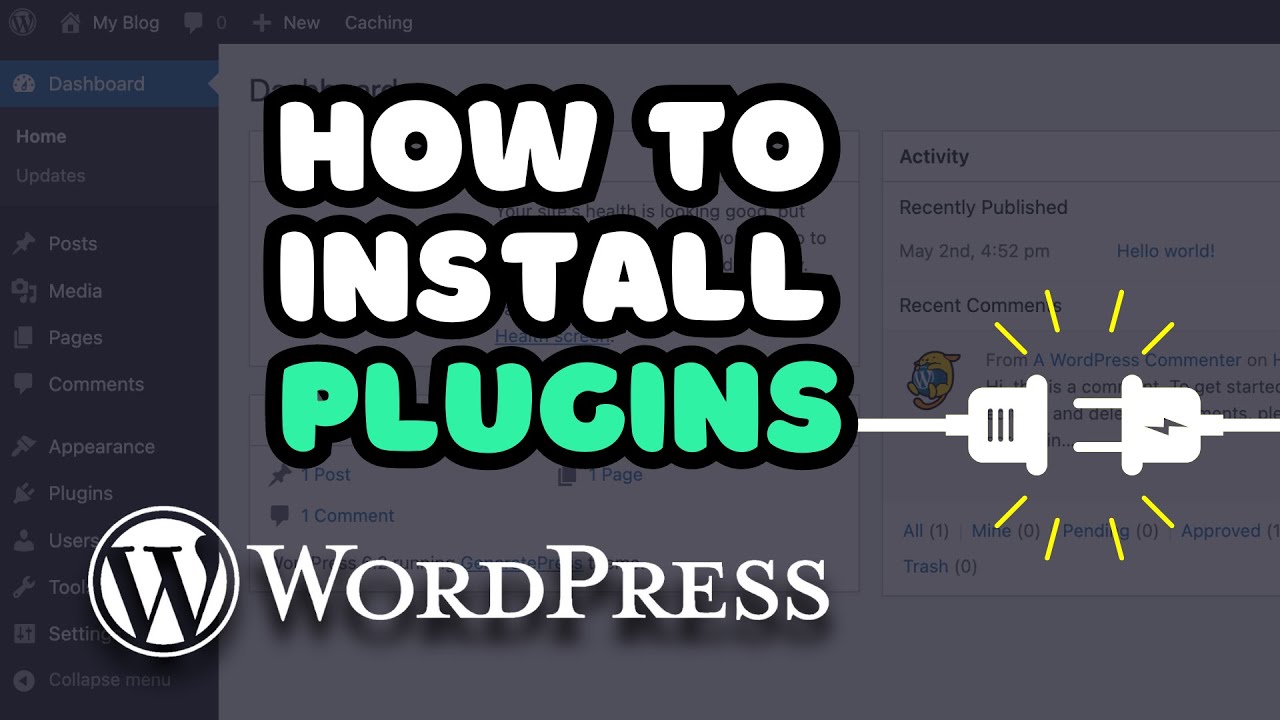WordPress security best practices 2025 are more critical than ever as cyber threats continue to evolve. Hackers target millions of WordPress sites every year, exploiting weak passwords, outdated plugins, and poor hosting security.
To safeguard your website, you need a proactive security strategy that combines strong technical measures with consistent monitoring. This comprehensive guide explores the most effective ways to protect your WordPress site in 2025, ensuring your data, visitors, and brand remain safe.
1. Keep WordPress Core, Themes, and Plugins Updated
Outdated software is the number one reason WordPress sites get hacked. According to Sucuri’s Website Hacked Report, nearly 49% of compromised WordPress websites were running outdated versions of plugins or themes.
Why Updates Matter
- Hackers actively scan for vulnerabilities in old versions.
- Updates fix bugs, improve performance, and patch security holes.
- Even minor updates can include critical fixes that prevent exploits.
Best Practices for 2025
- Enable Automatic Updates: WordPress allows automatic updates for minor releases. For major updates, test them on a staging site first.
- Check Plugin Activity: Before installing a plugin, review its last update date. Avoid plugins that haven’t been updated for over a year.
- Use Management Tools: Platforms like ManageWP or MainWP help update multiple websites at once, saving time.
Pro Tip: Always back up your site before performing bulk updates.
2. Use Strong Login Credentials and Two-Factor Authentication (2FA)
Your WordPress login page is the first line of defense. Unfortunately, it’s also the most common target. Brute-force attacks can attempt thousands of username/password combinations in minutes.
Best Practices
- Unique Usernames: Avoid “admin” or your domain name as a username.
- Strong Passwords: Create long, complex passwords with a mix of letters, numbers, and symbols. Use a password manager like 1Password or LastPass.
- Enable 2FA: Two-factor authentication adds another verification step, typically a code sent to your phone.
Recommended Plugins for 2FA
- Wordfence Login Security
- Google Authenticator
- Two Factor
Pro Tip: Require 2FA for all admin accounts, not just the site owner.
3. Limit Login Attempts and Enable CAPTCHA
Without restrictions, hackers can attempt unlimited login attempts. Limiting attempts and adding CAPTCHA significantly reduces brute-force risks.
How to Implement
- Limit Login Attempts Reloaded: Set a limit of 3–5 failed attempts before an IP is temporarily locked out.
- CAPTCHA Solutions: Add Google reCAPTCHA or hCaptcha to block automated login bots.
- Custom Login URLs: Change your login page from
/wp-adminto something unique with plugins like WPS Hide Login.
Pro Tip: Monitor login attempts to identify repeated suspicious IP addresses.
4. Secure Hosting Environment
Choosing the right host is one of the most underrated aspects of WordPress security. A weak server environment makes your site vulnerable even if your site-level protections are strong.
What to Look for in 2025 Hosting Providers
- Built-in Web Application Firewall (WAF)
- Automated daily backups
- Free SSL certificates
- Malware scanning and removal services
- DDoS protection at the server level
Recommended Secure Hosts
- WP Engine – Managed hosting with enterprise-grade security.
- Kinsta – Built-in firewall, malware scanning, and free SSL.
- SiteGround – Affordable with strong security features.
Pro Tip: Avoid free hosting providers — they rarely include robust security.
5. Install a Reliable WordPress Security Plugin
Security plugins help monitor, block, and report suspicious activity. They act as a safety net.
Top Security Plugins in 2025
- Wordfence Security – Real-time firewall, malware scanning, login protection.
- Sucuri Security – Cloud-based firewall, malware cleanup, and monitoring.
- iThemes Security – Over 30 features, including brute-force protection and file change detection.
Pro Tip: Stick to one comprehensive security plugin to avoid conflicts.
6. Use SSL Certificates and HTTPS Everywhere
SSL encrypts data between your site and visitors. It’s now mandatory for trust and SEO.
Why SSL is Non-Negotiable in 2025
- Google ranks HTTPS sites higher.
- Browsers flag HTTP sites as “Not Secure.”
- Protects sensitive data like login credentials and payment details.
How to Implement
- Use Let’s Encrypt for free SSL.
- Enforce HTTPS using Really Simple SSL.
- Ensure all internal links and media load over HTTPS.
Pro Tip: Check your SSL configuration with tools like Qualys SSL Labs Test.
7. Regular Backups and Disaster Recovery Plans
Backups are your last line of defense. If all else fails, a clean backup ensures you can restore your site quickly.
Backup Strategy
- Frequency: High-traffic sites → real-time backups; smaller sites → daily or weekly.
- Best Plugins: UpdraftPlus, BlogVault, Jetpack Backup.
- Storage Locations: Store copies in cloud storage (Dropbox, Google Drive) or offsite servers.
Pro Tip: Perform test restores regularly to ensure your backups work.
8. File Permissions and Database Security
Incorrect file permissions leave your site vulnerable to unauthorized access.
File Permission Recommendations
- wp-config.php: 400 or 440
- .htaccess: 444
- Folders: 755
Database Security
- Change the default database prefix (
wp_). - Use strong database usernames and passwords.
- Restrict remote access to your database.
Pro Tip: Move wp-config.php to a non-public directory for extra protection.
9. Monitor Website Activity and Logs
Constant monitoring helps you detect unusual activity before it escalates.
Tools to Use
- WP Activity Log: Tracks user logins and changes.
- Wordfence Dashboard: Real-time monitoring and notifications.
- Server Logs: Detect brute-force attempts and suspicious requests.
Pro Tip: Set up automated email alerts for unusual login attempts or file changes.
10. Disable XML-RPC and Restrict REST API Access
XML-RPC allows remote access but is often abused for brute-force and DDoS attacks.
How to Disable XML-RPC
- Use plugins like Disable XML-RPC.
- Or block access through your
.htaccessfile.
REST API Security
- Restrict REST API access to authenticated users only.
- Use plugins like Disable REST API if you don’t need it.
Pro Tip: If you rely on Jetpack or mobile apps, configure partial restrictions instead of full disablement.
11. Protect Against DDoS and Malware Attacks
DDoS and malware attacks can cripple your website’s performance and reputation.
DDoS Protection
- Use a CDN like Cloudflare or Sucuri with built-in DDoS mitigation.
- Configure rate-limiting to filter abnormal traffic.
Malware Protection
- Run weekly scans with Wordfence or Sucuri.
- Quarantine infected files immediately.
- Remove suspicious code manually if flagged.
Pro Tip: Harden your server firewall to block malicious IPs automatically.
12. Educate Users and Manage Roles Carefully
Even the best security setup fails if your users are careless.
Best Practices
- Assign roles carefully (e.g., don’t give editor-level users admin rights).
- Train contributors to spot phishing and fake update requests.
- Audit user accounts quarterly and remove inactive accounts.
Pro Tip: Use the User Role Editor plugin for granular control over permissions.
Advanced Security Measures for 2025
The future of WordPress security relies on advanced technologies.
Emerging Trends
- AI-Powered Detection: Plugins now use AI to detect new malware patterns.
- Zero-Trust Models: Every login or request is verified, no matter the source.
- Hardware Security Keys: Devices like YubiKey add a physical layer of security.
Pro Tip: For large businesses, invest in an enterprise Web Application Firewall (WAF).
Final Thoughts
Following WordPress security best practices 2025 isn’t just a technical task—it’s a responsibility to your business, visitors, and data. By combining strong hosting, updated software, firewalls, backups, and proactive monitoring, you can significantly reduce your risk of attack.
The web is evolving, and so are threats. But with these essential tips, your WordPress site will remain secure, reliable, and ready for growth in 2025 and beyond.
👉 Next Step: Audit your site today, update your security settings, and install a trusted security plugin to get started.








